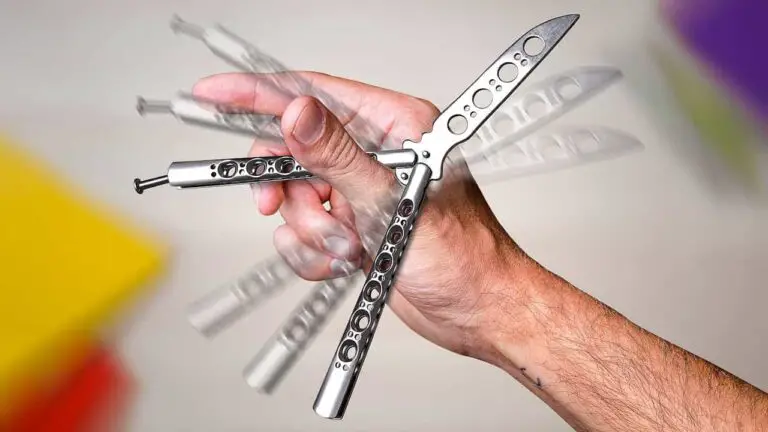You can tell the authenticity of a Damascus steel knife by testing the blade in an acid solution, looking at the quality of its steel, researching the manufacturer, or observing the knife’s pattern and folds.
However, some or all of these methods may not be available to you when buying the knife. Thus, I discuss multiple ways to test a real Damascus steel knife before and after you’ve had it.
Let’s get started.
Table of Contents
How to Determine a Fake or Real Damascus Knife?
The discussed methods below will help you tell if your Damascus knife is fake or real. I also included some checks you can do before buying so you don’t end up with a bad knife.
Method #1 – The Acid Test
The acid test works on Damascus steel because of its unique patterns and acid etching process, provided you have the real thing.
I’ve dug up a process that uses food-safe acid so you don’t harm yourself if it’s a kitchen knife or ruin the blade.
Here’s how to do this test:
- Clean the Damascus steel blade with rubbing alcohol to remove any dirt and debris on its surface.
- Leave the knife to dry.
- Pour strong vinegar into a bowl. Make sure the quantity is enough to swallow the entire blade.
- Soak the entire blade length in the strong vinegar container and leave for several hours.
- Remove the knife after soaking and spray with ammonia window cleaner. This inactivates the vinegar acid content.
- Wipe the knife down with a wet towel and observe your results.
Once you follow these steps, the different scenarios you could have are presented in the table below.
| Scenario | Verdict |
|---|---|
| No changes on the blade | Cheaper Damascus stainless steel |
| Dark layers become lighter; light layers remain unchanged | Cheaper Damascus stainless steel |
| Darkened (but still distinct) layers | Mass-produced but above-average Damascus steel knives |
| Darkened (but not distinct) layers | Cheaper but decent Damascus steel |
| Blurry lines with close colors | Fake Damascus steel |
When you don’t have precise results, you might have to return the knife to the vinegar bath for a longer time.
Note: You can also use ferric chloride instead of vinegar, but the ferric chloride must not have been used on copper. Likewise, soak for shorter times with ferric chloride.
Method #2 – The Polish Test
I prefer the acid test over this polish test. That’s because you need some knowledge of how to acid etch a knife to pull this off completely.
Still, it’s an effective method to tell a fake Damascus apart from a genuine article.
Here’s how the polish test works:
- Polish your alleged Damascus steel blade.
- Acid etch the knife a second time.
Polishing the knife will take away the Damascus steel pattern. Once you acid etch it again, though, the design should re-appear.
Otherwise, the manufacturer only added the pattern and didn’t fold the steel to make the knife.
In other words, it’s a fake – or one of those ‘modern’ Damascus knife models.
Method #3 – The Pattern Test
While Damascus steel knives are expected to have a pattern after manufacturing, it’s near impossible to have any two Damascus steel knives with the same pattern.
Of course, the forging or other manufacturing processes can be closely replicated to ensure you have similar patterns. Still, they shouldn’t be the same.
So, if you’re getting a Damascus knife set and you see the same pattern on them all, best believe it’s a fake.
Method #4 – The Pattern Test II
If you don’t have multiple knives to compare, you can still run a pattern test by looking at the single blade.
Again, Damascus steel patterns are smooth and desirable but unnatural. So, if they look like they were hand drawn to perfection, you have your answer already.
For clarity, that’s fake Damascus steel.
Method #5 – The Spine and Bolster Inspection Test
The spine test is one of the easiest ways to spot cheaper Damascus steel reproductions.
Recall that the same metal is supposedly used for all parts of the knife blade. Thus, the outcome should be the same.
That’s why the spine and bolster (if present) should also have the Damascus steel pattern. If you only have the pattern on the blade, you know it was either acid etched there after making the knife with another steel or drawn in by the knifemaker.
Note: Sharpened and polished regions (such as the edge) won’t have the Damascus pattern. In that case, you could give such a knife the benefit of the doubt by taking it to an acid test.
That way, you confirm whether it’s real or fake, especially if the manufacturer claims the pattern was polished off.
Method #6 – The Manufacturer Check
Reliable manufacturers have a lot to lose from being dishonest, so they’d instead not do it. That’s why I prefer them when purchasing Damascus steel.
These manufacturers will let you know if they followed the actual Damascus steel-making methods, only acid-etched the knife, or used pattern-welding methods to get their results.
More often than not, you can trust what they say and take their word for it.
I can’t say the same thing about other less reliable or unknown manufacturers just looking to score a sale.
Method #7 – The Price Test
I left this one for last since it might be a bit dicey.
Already, I compared Damascus steel and high carbon stainless steel knives and determined they were more or less the same. Even though both are pricey (and justifiably so), real Damascus steel is often more expensive.
Thus, don’t look for a good Damascus steel knife with a $50 budget. In fact, some of the recommended Damascus steel knives will set you back $100, at least.
You can keep reading below for the Damascus steel knives I swear by.
Which Damascus Steel Knives Are Worth the Money?
I checked these modern Damascus steel knives myself, and they’re worth the spend. Here’s why.
| Item | Type | Features | Price |
|---|---|---|---|
| CIVIVI Badlands Vagabond | Folding knife | 3.25″ blade; Carbon fiber handle; Lifetime guarantee | Check on Amazon |
| Dalstrong Shogun Damascus Chef Knife | Kitchen knife | 8″ blade; AUS 10V super steel; Lifetime guarantee | Check on Amazon |
| Dalstrong 3pc Damascus knife set | Kitchen knife set | 3.5″ paring knife; 3″ bird’s beak knife; 3.5″ serrated knife | Check on Amazon |
So, if you’re in the market for a single Damascus knife or a whole set of them, you now know which ones to pick.
Can Damascus Steel Be Faked?
Most Damascus steel knives on the market today are faked to take advantage of the craze around these knives and the price they command.
While some fake Damascus steel knives use good quality steel, they are merely acid-etched to use the Damascus pattern rather than being annealed and welded to form the pattern naturally.
Thus, it’s best to understand the differences between fake and real Damascus steel knives lest you buy a well-made fake for a higher price than you should have paid for the blade.
How Much Do Real Damascus Steel Knives Cost?
Quality and well-made Damascus steel knives usually cost upwards of $100. The price can go farther than that, depending on the manufacturer and quality of materials used.
Likewise, you can buy a Damascus steel knife for a higher price if it’s a custom order like the Randall knives.
That said, you can get some Damascus steel-patterned knives from quality Japanese knifemakers like Tuo for a fraction of the price.
So, while you get the design and quality material, you’ll only be sacrificing the authentic double-alloyed steel that makes Damascus.
Does Damascus Steel Stick to a Magnet?
Damascus steel knives are made from one-part ferrous metals, which makes them magnetic. Thus, genuine Damascus steel blades will stick to magnets, which shouldn’t be a test to determine a fake Damascus from the real deal.
Do Damascus Steel Knives Rust?
Damascus steel knives are made from one high carbon stainless steel material, which makes them susceptible to rust. However, they rust slower than pure high carbon stainless steel since they contain nickel and other impurities to slow down corrosion.
In my guide to Damascus steel vs. high carbon stainless steel knives, I also mentioned that Damascus steel knives show rust slower due to the patterns on the blade. So, they may be rusting at the same rate as your other knives, but the patterns do an excellent job of hiding that.
Overall, check out this guide to removing rust from Damascus steel knives for tips on preventing and solving the rust problem when it happens.
Is Modern Damascus Steel Real?
Modern Damascus steel is far from the original wootz steel model.
However, the changes are primarily due to refining the Damascus steel knife-making process to churn out more knives and ensure better quality control than the older methods.
Still, several manufacturers apply modern methods and stray too much from the original Damascus model. So, make sure the modern Damascus steel you’re buying retains elements of the old art, even if it’s been modified for better quality control and production.
Final Thoughts
Telling a fake Damascus steel from the real deal might be challenging if you don’t know what to look for. Once you follow the methods and tests on this list, you have a better chance of not buying a fake Damascus steel knife.
Always remember that most Damascus steel knives today are the modern version of the old steel. Don’t fret, though, as these current builds are more reliable and better in quality.
Still, choose a reliable manufacturer and apply everything you’ve learned here.

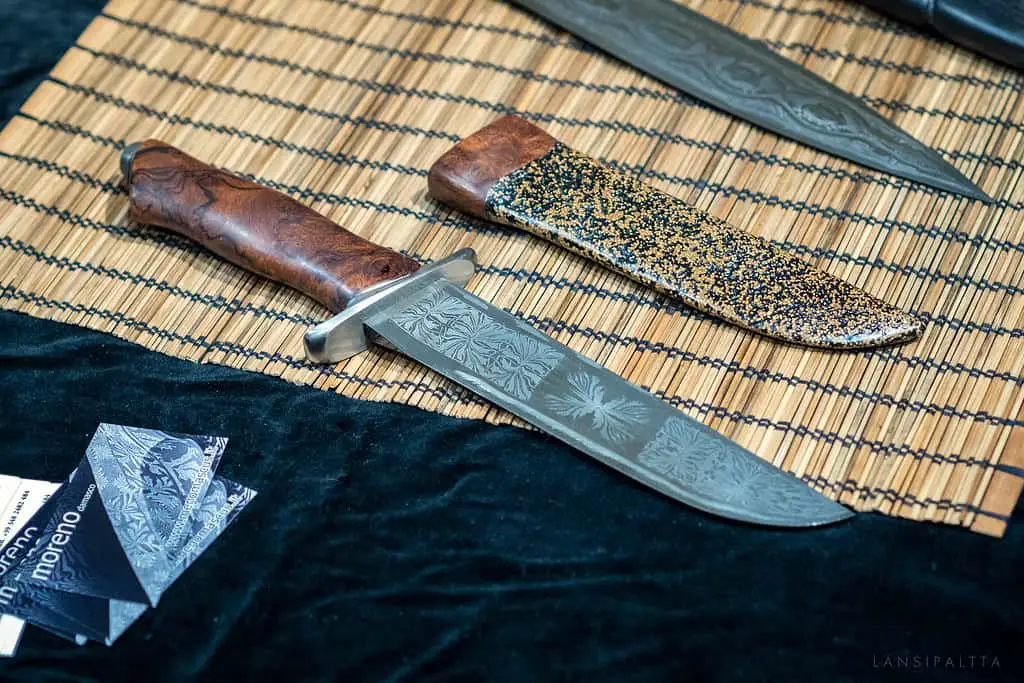
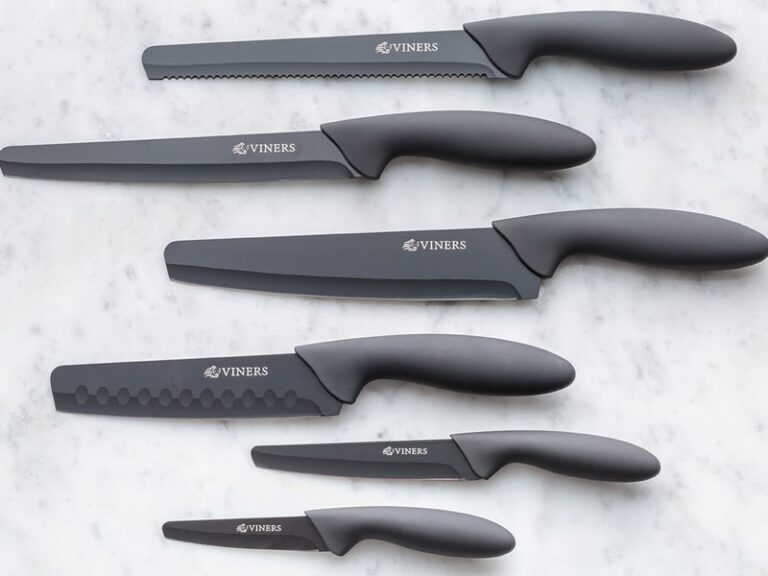
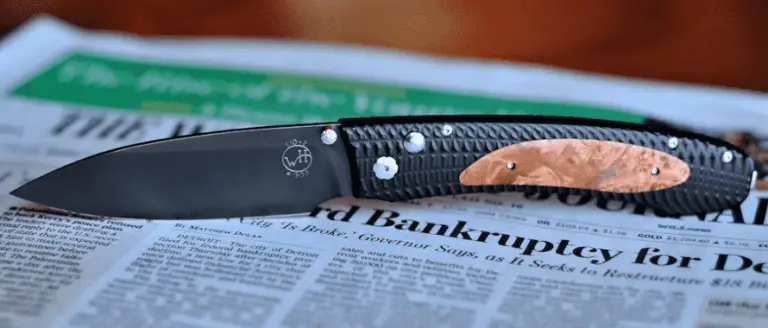
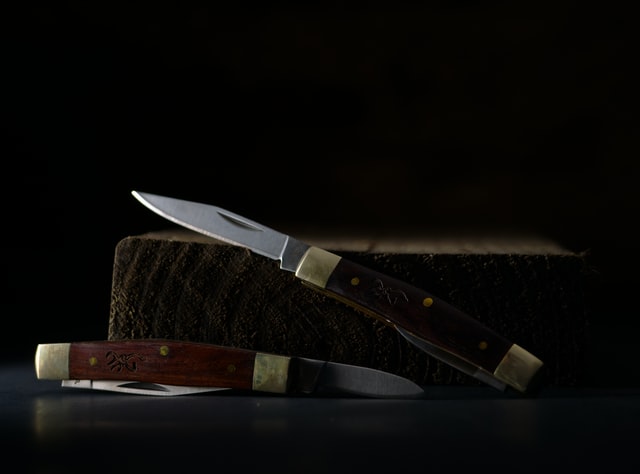
![Anatomy of a Knife: All Parts of a Knife Blade [+ Buying Guide]](https://cutsandcarves.com/wp-content/uploads/2021/05/Anatomy-of-a-Knife-All-Parts-of-a-Knife-Blade-Buying-Guide-768x1025.jpg)
